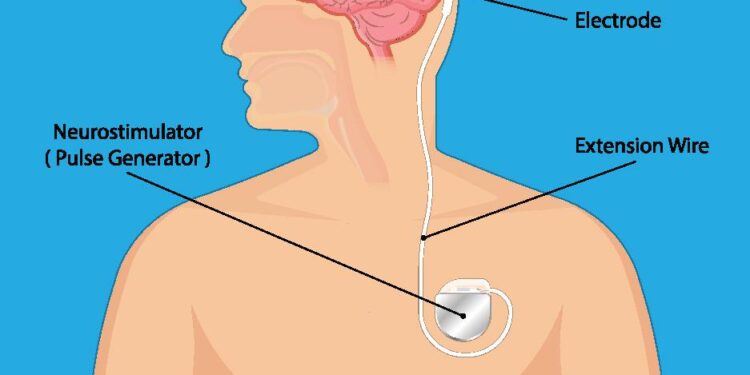Scientists are exploring how advancements in artificial intelligence (AI) and neuroscience could revolutionize treatments for smokers seeking to quit. Emerging research suggests that personalized brain stimulation, guided by AI-driven analysis, may enhance the effectiveness of therapies aimed at reducing nicotine dependence. This innovative approach promises to tailor interventions to individual brain patterns, offering new hope in the fight against smoking addiction.
Advancements in Brain Stimulation Techniques Targeting Smokers
Recent breakthroughs in brain stimulation techniques offer promising avenues for addressing nicotine addiction. Researchers are combining advanced neuroimaging with machine learning algorithms to map smokers’ brain activity patterns more precisely than ever before. This enables the tailoring of stimulation protocols to target specific neural circuits involved in craving and withdrawal symptoms. Innovations such as transcranial magnetic stimulation (TMS) and transcranial direct current stimulation (tDCS) are now being optimized to enhance efficacy based on individual brain signatures, potentially revolutionizing cessation therapies.
A comparative analysis of stimulation modalities highlights the growing trend towards personalization, as shown in the table below. By integrating AI-driven data analytics, treatment regimens can adapt dynamically, increasing the likelihood of long-term abstinence. Key features leveraged in these novel approaches include:
- Real-time feedback loops for dosage adjustment
- Neural biomarker identification for craving intensity
- Customized session timing aligned with circadian rhythms
| Technique | Personalization Level | Primary Target Area | Effectiveness Rate |
|---|---|---|---|
| TMS | High | Prefrontal Cortex | 45% |
| tDCS | Moderate | Insula | 38% |
| Deep Brain Stimulation | Experimental | Ventral Tegmental Area | 30% |
How Artificial Intelligence Enhances Personalized Treatment Plans
Advancements in artificial intelligence have revolutionized the way personalized treatment plans are developed, especially for complex conditions such as smoking addiction. By analyzing vast datasets including genetic information, brain activity patterns, and behavioral profiles, AI algorithms can identify unique patient signatures that influence treatment outcomes. This precision allows clinicians to tailor brain stimulation therapies, optimizing parameters like intensity, frequency, and target regions to maximize effectiveness while minimizing side effects. The incorporation of machine learning models facilitates continuous adaptation of the treatment, ensuring adjustments are made in real time based on patient response.
Key benefits of AI-driven personalized brain stimulation include:
- Enhanced prediction accuracy for treatment responses
- Reduction in trial-and-error approaches
- Efficient resource allocation and cost reduction
- Minimized adverse effects through targeted intervention
| Factor | AI Contribution | Impact on Treatment |
|---|---|---|
| Genetic Markers | Data integration and interpretation | Customized stimulation profiles |
| Neural Imaging | Pattern recognition and mapping | Accurate localization of targets |
| Behavioral Data | Predictive analytics | Personalized adjustment schedule |
Expert Recommendations for Integrating Science and AI in Smoking Cessation Programs
Leading researchers emphasize the critical role of integrating scientific advancements with artificial intelligence to enhance the effectiveness of brain stimulation therapies for smoking cessation. By leveraging AI-driven data analysis, programs can dynamically adjust stimulation parameters tailored to individual neurobiological responses, significantly improving quit rates. Experts advocate for a multidisciplinary approach, where neuroscientists, AI specialists, and clinicians collaborate to design adaptive protocols that respond in real-time to each smoker’s neural feedback.
Key recommendations include:
- Data-driven personalization: Utilizing machine learning algorithms to interpret complex brain signals for precise stimulation targeting.
- Continuous monitoring: Implementing wearable neurodevices that provide ongoing feedback for therapy adjustments.
- Ethical frameworks: Ensuring patient privacy and consent in AI-mediated treatment processes.
- Cross-disciplinary training: Equipping healthcare providers with AI literacy to effectively manage personalized interventions.
| Aspect | Traditional Programs | AI-Integrated Programs |
|---|---|---|
| Personalization | Generic protocols | Individualized in real time |
| Response Measurement | Self-reported | Neural feedback analysis |
| Adaptability | Fixed schedules | Dynamic adjustments |
| Outcome Efficiency | Moderate | Significantly improved |
The Conclusion
As research continues to unveil the intricate workings of the human brain, the convergence of science and artificial intelligence stands poised to revolutionize therapeutic interventions for smokers. By tailoring brain stimulation techniques to individual neural patterns, these advancements promise more effective, personalized treatments that could significantly enhance cessation success rates. While further studies are needed to validate these approaches, the potential to harness AI-driven insights marks a hopeful stride toward combating nicotine addiction and improving public health outcomes worldwide.































